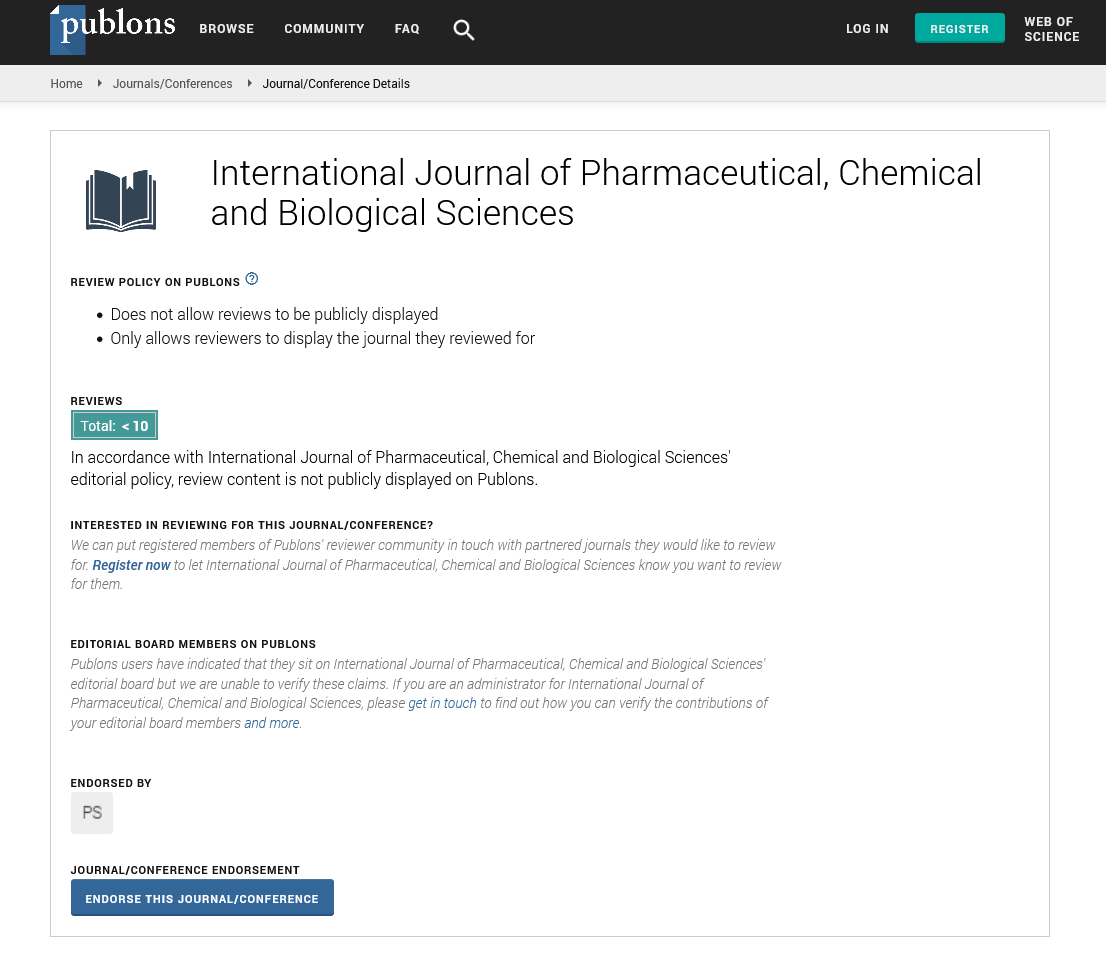Commentary - International Journal of Pharmaceutical, Chemical and Biological Sciences ( 2024) Volume 14, Issue 1
Unraveling the Art and Science of Drug Design: A Journey into Therapeutic Innovation
Hong Leng*Hong Leng, Department of Biochemistry, University of Chinese Academy of Sciences, China,
Received: 28-Feb-2024, Manuscript No. ijpcbs-24-131344; Editor assigned: 01-Mar-2024, Pre QC No. ijpcbs-24-131344 (PQ); Reviewed: 15-Mar-2024, QC No. ijpcbs-24-131344; Revised: 20-Mar-2024, Manuscript No. ijpcbs-24-131344 (R); Published: 27-Mar-2024, DOI: DOI: 10.36648/2471-9668-14.1.7
Description
Drug design stands at the forefront of modern pharmacology, blending scientific ingenuity with computational prowess to create novel therapeutics that alleviate human suffering and combat diseases. This interdisciplinary field integrates principles from chemistry, biology, pharmacology, and computational sciences to elucidate molecular mechanisms of disease and devise targeted interventions. In this comprehensive exploration, we embark on a journey through the intricate landscape of drug design, unraveling its fundamental concepts, methodologies, and transformative impact on healthcare. The discovery and development of new drugs are imperative for addressing unmet medical needs, combating emerging health threats, and improving patient outcomes. Drug design begins with the identification and validation of molecular targets implicated in disease pathogenesis. This involves deciphering the underlying mechanisms of disease, identifying druggable targets, and validating their relevance through experimental and computational approaches. Rational drug design leverages insights into the structure and function of biological macromolecules to design molecules that selectively modulate target activity. This approach involves the rational design of small molecules, peptides, antibodies, or nucleic acids to interact with target proteins or nucleic acids with high affinity and specificity. Computer-Aided Drug Design (CADD) employs computational techniques, such as molecular modeling, molecular dynamics simulations, and structure-based drug design, to expedite the drug discovery process. Computational methods enable the prediction of ligand-target interactions, virtual screening of compound libraries, and optimization of lead compounds with favorable pharmacokinetic properties. Fragment-based drug design relies on the screening of small molecule fragments that bind to target proteins with low affinity, followed by iterative optimization to enhance potency and selectivity. This approach facilitates the exploration of chemical space and the identification of novel scaffolds for drug development. Identifying and validating disease-relevant targets remains a bottleneck in drug discovery, particularly for complex diseases with multifactorial etiology. Integrating omics data, functional genomics, and systems biology approaches can enhance target prioritization and validation efforts. Predicting the Absorption, Distribution, Metabolism, Excretion, and Toxicity (ADMET) properties of drug candidates remains a challenge in early-stage drug development. Integrating computational ADMET models with experimental data and machine learning algorithms can improve the accuracy and reliability of ADMET predictions. Drug resistance poses a significant challenge in the treatment of infectious diseases, cancer, and other therapeutic areas. Tailoring therapies to individual patient profiles through pharmacogenomics, biomarker-driven approaches, and combination therapies can mitigate the emergence of drug resistance and enhance treatment outcomes. Access to computational resources and expertise presents a barrier to entry for academic researchers and small biotech companies seeking to leverage computational drug design approaches. Collaborative initiatives, open-access databases, and cloud-based computing platforms can democratize access to computational tools and accelerate innovation in drug discovery. In conclusion, drug design represents a convergence of scientific disciplines and technological advancements aimed at discovering and developing innovative medicines to address unmet medical needs and improve patient outcomes.
Acknowledgement
None.
Conflict Of Interest
None.

